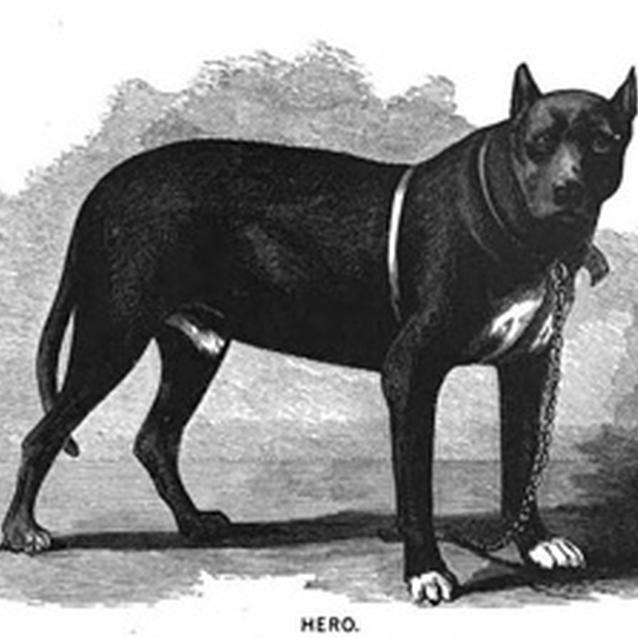The desperate events of the Civil War created a strong dependence of humans on animals. With their uses as food, transportation, and companionship, animals were much appreciated by the armies that kept them. Through some of these extraordinary examples, we see that they are worthy of our respect and remembrance.
"Hero" the Prison Guard Dog

Library of Congress
For Union soldiers unlucky enough to be captured, a long and bleak experience in a Confederate prison awaited them. Many of them spent time in Richmond, held in converted warehouses, before being shipped farther South. At Libby Prison and Castle Thunder, many of those men met a unique and memorable animal: a Russian bloodhound named Hero; guard dog of the Confederacy.
"Hero is a dog about seven feet in length from tip to top, weighing nearly two hundred pounds. He is a splendid cross between a russian bloodhound and a bull-dog, and combines the faithfulness of the one with the ferocity of the other. We have seen him seize little dogs that came around his heels, shake them and cast them twenty feet from him. The stoutest man he would bring to the ground by one gripe on the throat, and it was always a difficult matter to get him off if he had once tasted or smelled blood."
~The Richmond Whig, May 19th, 1865
The fearsome appearance of Hero surely caused some initial terror in the captured Federals. However, according to some sources, Hero's looks could be deceiving.
"There was absolutely nothing formidable about the dog but his size, which was immense. He was one of the best natured hounds whose head I ever patted, and one of the most cowardly. If a fise or a black and tan terrier barked at him as he stood majestic in the office door, he would tuck his tail between his legs and skulk for a safer place. I never heard that he bit anything but the bones that were thrown him, and he was quite a playfellow with the prisoners when permitted to stalk among them."
~ Recollection of Libby Prison by Rev. J.L. Burrows, D.D
The Loyal Dog

Library of Congress
Captain Werner Von Bachelle served with the famous "Iron Brigade" of the Union army during the Maryland Campaign. During the summer, the men of the 6th Wisconsin gave the captain a dog that had wandered into camp. Von Bachelle, a former officer in the French army, found the dog to be exceptionally clever and loyal. The Newfoundland was immediately embraced by the troops and became a good friend to many of the soldiers on the march and in camp. By several accounts, the dog was known to stand in formation and could perform remarkable tricks, including offering a salute.
On September 17th, 1862, Von Bachelle commanded Company F as they advanced along the turnpike approaching Dunker Church, his dog at his side. Musket fire raked the Company and the captain fell dead. The action grew fierce and the 6th Wisconsin was forced to fall back. The men retreated, leaving the dead and most of the wounded on the field. The dog, however, did not retreat. Looking back, the soldiers saw him guarding his master's body.
Two days later, the men returned to the turnpike. There they found Von Bachelle and the Newfoundland, laying dead together. The dog preferred death to leaving his friend behind. As a tribute to his loyalty, the dog was buried with his master with full military honors.
Part of a series of articles titled The Burden of Beasts.
Previous: More than Necessary: Horses
Last updated: August 11, 2017
